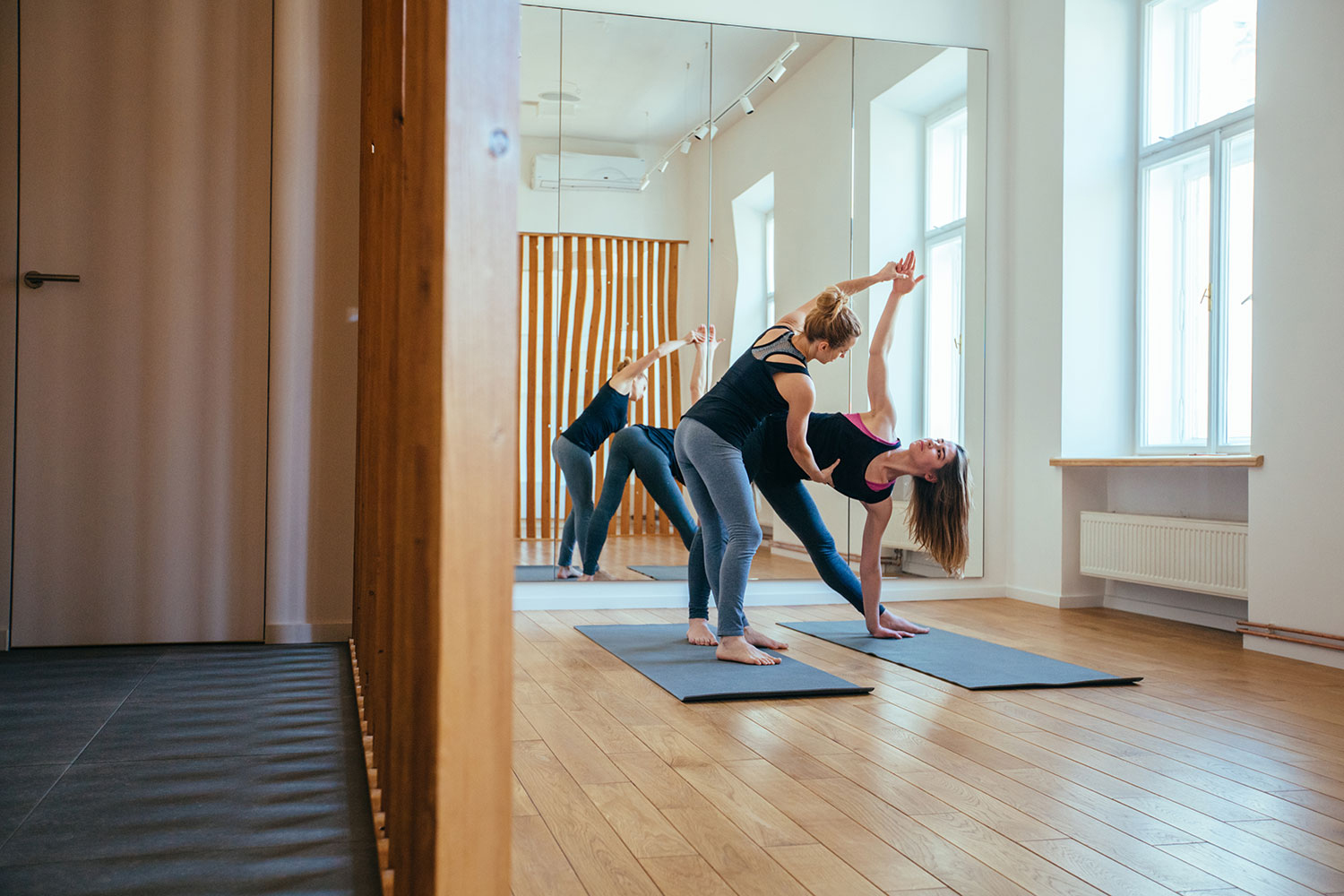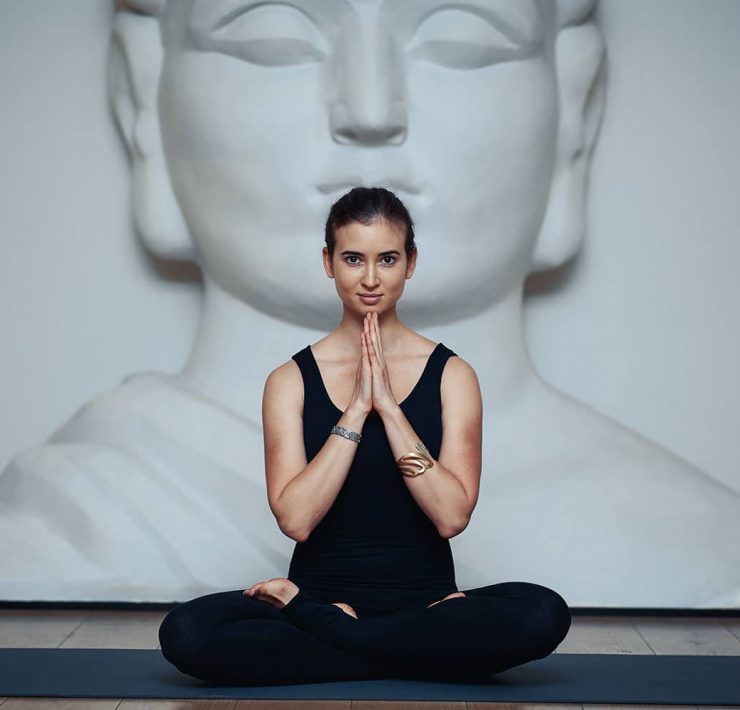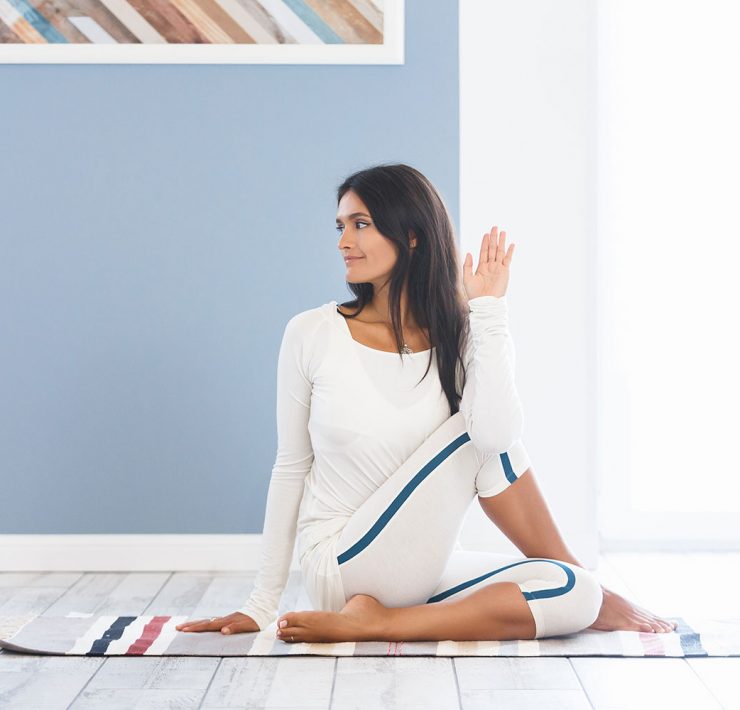
After spending nearly two decades as a relationship therapist, Patricia…
Yoga classes can be hard enough to navigate without obscure cues and unfamiliar Sanskrit words. With daily classes often becoming repetitive for yoga instructors, it’s no wonder they feel the need to get creative with verbal instructions. This abstract language can be an excellent way for students to visualize what they’re trying to achieve, but sometimes the meaning can get lost along the way. In an effort to make your mat time a little less confusing, we’ve put together a list of some weird things yoga teachers say and what they actually mean.
Melt Your Body Into The Mat

Now nobody’s asking you to transform into a puddle for the sake of yoga, but the visual idea of melting into your surroundings can really help students relax. We’re all familiar with the reference of ‘carrying the weight of the world on your shoulders,’ and this cue is a way to reduce that stress on the body. Most of the time we don’t even realize how tense we are until someone gives us the guidance to release and surrender. Next time you’re settling into Savasana, spend a little less time imagining yourself as a puddle and a little more time exhaling every ounce of tension out of your body.
Open Your Heart
Also spoken as ‘open your collarbone,’ this cue is used as a way to prevent students from rounding their shoulders. Many tend to overcorrect when given this cue, so it’s important to find a happy medium. It could also be understood in the sense of opening your heart to give and receive. Whether it’s love, acceptance, compassion, or respect; Yoga involves a deep level of vulnerability with our emotions. Embracing an open heart is key to finding peace with ourselves and those around us both on and off the mat.
Send Energy Out Through The Fingertips

Depending on the teacher, you might hear this as ‘sparkle out through your fingertips or toes.’ It’s a whimsical approach to the idea that energy travels from our center and out through the limbs. Yoga works to eliminate areas of stuck energy – Which is often in the hips, shoulders, and chest. However, these areas of ‘stuckness’ or tension can be found all over the body and create mental blocks the longer they go unattended. For example; we tend to store emotional baggage in our hips which is why deep hip-opening postures can cause some weepiness. You might find this outward public display of vulnerability embarrassing or uncomfortable, but it’s highly therapeutic to let go of stagnant negative energy so good vibes can enter. From a physical standpoint, this sensation often presents itself as tingling in this fingertips and toes as the trapped energy finds the nearest exit.
Inhale To Lengthen

Inhale to lengthen and exhale to soften – Sound familiar? This guidance is beneficial for delving deeper into postures by finding space and the ability to surrender. Take a seated forward fold for example – As you inhale think about bringing length to the back body by drawing the chest towards the toes. As you breathe out, let go of anywhere you’re still clinging to tension to soften the torso over the legs. So really, every pose can be continuously built upon using the attention to our breath.
Rotate Your Muscle Around The Bone
You want me to do what now? This one might sound physically impossible at first, but it’s a cue that really works to demonstrate the physical action of a pose. For the leg, it means to rotate the thigh bone outward to ground down and stabilize the pelvis. In lunging postures, students are guided to draw the inner thigh towards the ceiling and the outer thigh towards the floor. For the arms, it implies an outward rotation of the arm bones achieved by turning the pinkies to face one another. Suddenly, isometrically moving the muscles doesn’t sound so daunting anymore!
Find The Line Of Energy

All this talk of energy might sound a little far-fetched but stay with me here because it’ll help you get the most from your yoga practice. In many postures, the line of energy stems from the part of the body rooted to the floor. In a downward facing dog, the energy travels from the bottoms of the feet and moves along the spine to exit through the crown of the head. Understanding how truly connected all parts of the body deepens our self-awareness and allows us to move mindfully through a series of postures. So it’s not really about drawing a line down the body, but more about feeling the connective tissues working together to create shapes.
Articulate Your Vertebra
This cue sounds a lot more involved than it actually is; In fact, all teachers really mean when they say this is ‘roll the spine.’ Although it’s said with good intentions, some teachers confuse students by guiding them to ‘roll up through each vertebrae.’ This is misleading as we only have one vertebrae spinal column containing the individual vertebra, get it? So by articulating the vertebra uniquely, we slowly lengthen the body and find a connection to the different parts of our spine.
Surrender Into The Pose

It’s one thing to navigate your way into various shapes, and it’s another to reap all the benefits once you’re there efficiently. This cue encompasses both mental and physical blockages in the body. If you make your way into a pose but continue to stay tensed up, your body won’t be able to let go and move deeper. Likewise, it’s crucial to surrender any doubt, stress, tension, or insecurity that could be inhibiting your progress. You’ll feel emotional liberation as well as physical freedom in your movement.
Wring Out Your Organs

It’s well-known in the yoga world that twisting postures aid in our digestive and detoxification processes. However, this analogy can sound pretty intense if you’re new to yoga. Off-putting images of a sopping wet towel might come to mind first, and that’s precisely what the teacher wants. You won’t physically be ‘wringing out the organs,’ but the imagery helps students move deeper into the twist and gently massage the internal organs. As with any yoga pose, twists should be practiced with caution and far less force than it takes to actually wring out anything. So remember to lead with the lower spine and slowly spiral up until the gaze follows the direction of the heart – Never try to initiate a twist from the cervical spine as you can injure the neck.
Root Your Feet Into The Ground

Now, obviously, if we were to truly anchor our feet to the ground with roots, we’d have trouble navigating through the rest of class. Teachers who use this cue are inviting students to connect through their foundation and find a sense of support in a pose. In many postures, feet are our base and our grounding force to the earth below. By reinforcing that union, we give the rest of the body permission to expand. So make like a tree and root down to rise up!
Find Your Breath

Finding your breath implies that you’ve lost it – And I know that sounds crazy, but breathing is involuntary and often goes unnoticed despite being our life source. Yoga brings our awareness to the breath by establishing its connection to our movement and using it as a tool for expansion within poses. Instructors will prompt you to listen to the breath many times throughout class and notice how each movement is supported by an inhale or exhale. As this relationship to the breath thickens, we learn more about the ever-changing state of our being. When our breathing becomes rapid and shallow, we’ve gone too far, and when it’s deep and slow, we’ve entered a therapeutic state. Get to know your sacred breath and use it to maintain control over your body.
Knit Your Ribs In

Don’t go running for your sewing needles just yet – This confusing yoga-speak is all about the imagery to avoid overarching the lower back. The idea of knitting something made of bone is quite jarring, but the intention behind it is clear. We possess the greatest range of movement in the lumbar spine, making it easy to overcompensate when trying to find a neutral position. You may also hear the cue as ‘soften the front ribs’ or ‘resist puffing the ribs’ – It all implies the same message.
Scoop Your Tailbone

Speaking of being instructed to move parts of your body made from bone – Scooping your tailbone sounds a whole lot trickier than it actually is. Let’s start from the beginning, or rather, the end because that’s where your tailbone is: at the base of your spine. You may have been told to tuck, lengthen, or scoop your tailbone in class before. This cue is meant to help students create space in the vertebrae and rest in the natural curve of the spine so it can safely bear weight.
There you have it – Some of the most common (weird) things yoga teachers say and what they actually mean. Try to resist frustration the next time an instructor asks you to do something that sounds genuinely impossible with a seemingly innate part of your body. These cues are less about the literal translation and more about gathering a feeling through visualization.
What's Your Reaction?
After spending nearly two decades as a relationship therapist, Patricia journeyed down the path of writing as a vehicle for sharing her wisdom. Her work reflects a sincere interest in readers’ wellbeing and is abundant with helpful advice and fascinating insight.














